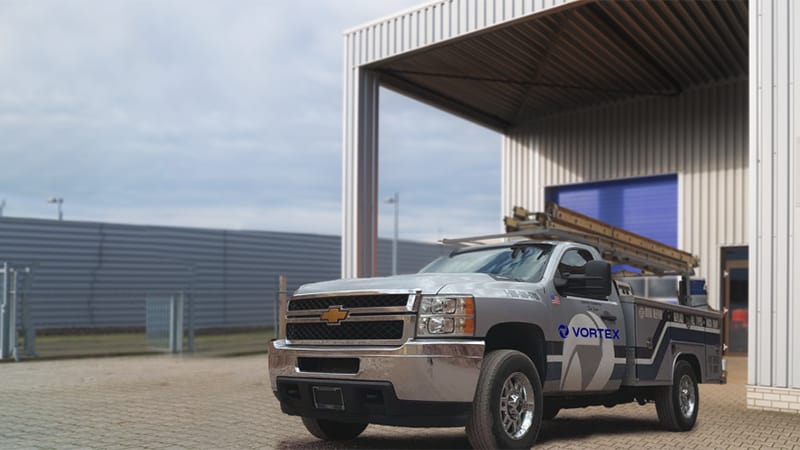Fiberglass vs. Steel Doors – Which is Better?
 Businesses need doors they can rely on. Wood looks great, but it’s costly, high maintenance, and breaks down in extreme weather. Which is why most businesses choose fiberglass or steel instead. Each has its own strengths and weaknesses, so, in order to help you decide which is a better fit for your company, let’s take a look at the relative merits of fiberglass vs. steel doors.
Businesses need doors they can rely on. Wood looks great, but it’s costly, high maintenance, and breaks down in extreme weather. Which is why most businesses choose fiberglass or steel instead. Each has its own strengths and weaknesses, so, in order to help you decide which is a better fit for your company, let’s take a look at the relative merits of fiberglass vs. steel doors.
Construction
Fiberglass and steel doors aren’t made from solid material. Instead, they consist of a polystyrene or polyurethane core, encased in fiberglass or steel. Most steel doors are made from 20-26 gauge steel (0.04-0.02 inches; lower gauges are thicker than higher ones). But while steel doors have solid steel casing, fiberglass doors are made from a composite of fiberglass reinforced plastic with hardwood framework.
Appearance
Fiberglass doors have a wide range of finishes. Not only can you paint them any color you want, you can even treat them to give them the appearance of a wooden door. This isn’t the case with steel doors. You can paint them, but there are no available finishes. However, both doors can support lites (glass windows) and decorative flourishes, such as molding or transoms.
Maintenance
Both fiberglass and steel doors are low maintenance, though fiberglass has a slight edge. Like steel, fiberglass resists dents and dings and doesn’t swell, expand, or rot in moist or humid environments. Repeated contractions can cause steel doors to crack, though even under the worst conditions it would take at least a decade. Steel is highly resilient. It resists dents and dings better than fiberglass and stands up well in heavy weather as long as it’s regularly repainted or varnished. In fact, with proper upkeep, a steel door will last as long as a fiberglass one, with each requiring only minimal effort to maintain.
Weather Resistance
Though steel and fiberglass both stand up well against the elements, fiberglass has a slight, long-term advantage because it doesn’t rust or transfer heat. Fiberglass doors have an R-value of six or seven, making them one of the best insulators on the market. Steel doors, on the other hand, have an R-value of five or six ‒ still a strong insulator, just not as strong as fiberglass.
Steel rusts only if it’s not well maintained. Any scratches or dents that damage its galvanized finish expose the bare metal underneath, which can lead to corrosion. Fortunately, most damage can be repaired at low cost. A layer of putty and a fresh coat of paint will seal most scratches and restore the door.
Security
Nothing protects your building better than steel. It bends, but doesn’t break. Rocks, crowbars, and sledgehammers are almost totally ineffective against it. Only the strongest impacts can punch through, which makes it immune to common burglar tools. Fiberglass is tough, but doesn’t provide the same level of protection.
Deciding Between Fiberglass vs. Steel Doors
When it comes to fiberglass vs. steel doors, Vortex Doors is committed to providing you with the best advice and support. We not only install and maintain your doors. We help evaluate your building, so you can be assured the doors you choose are the ones best suited to your needs. No matter how big or small the project, we’ll find a solution. Contact us today!










